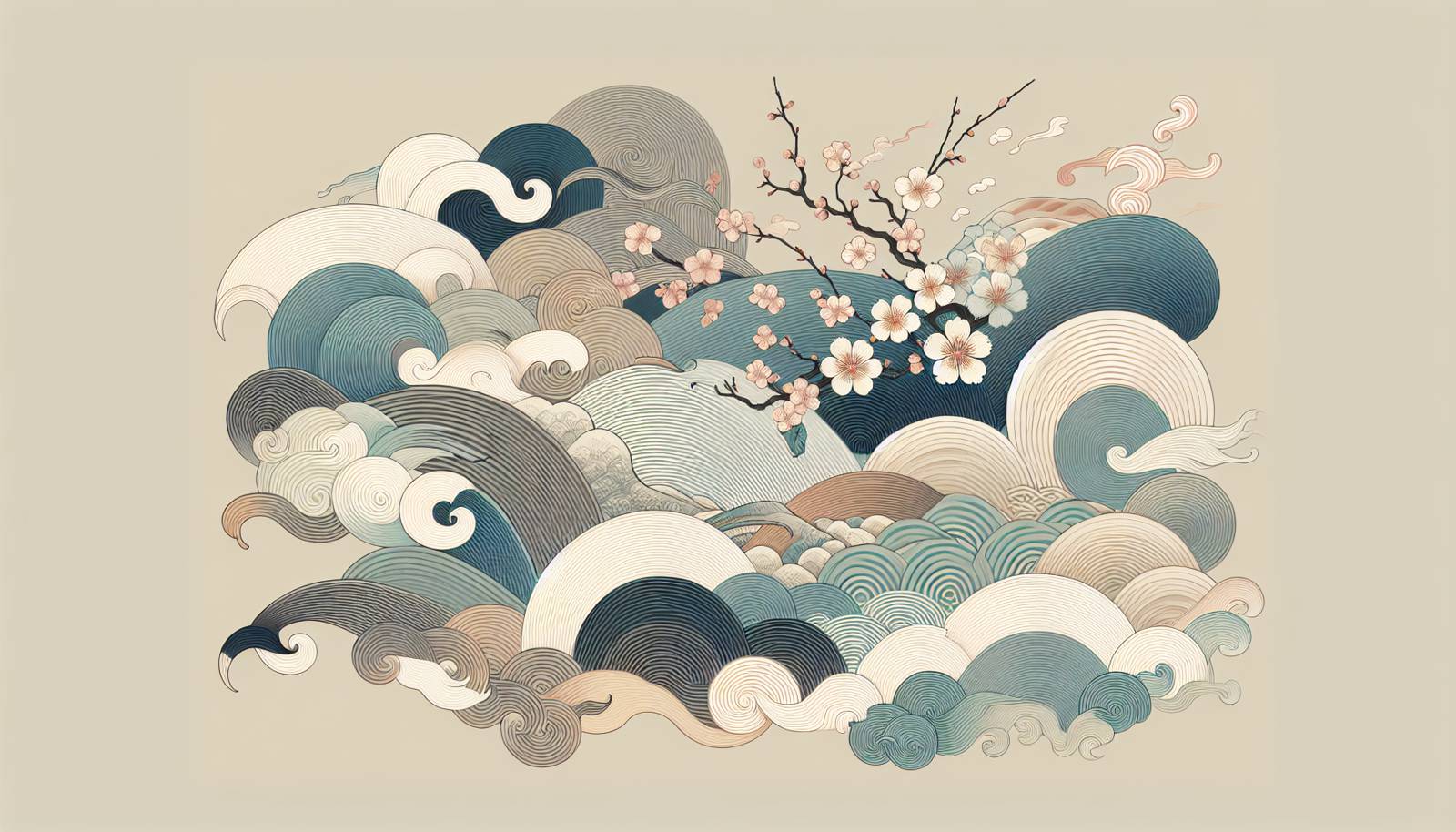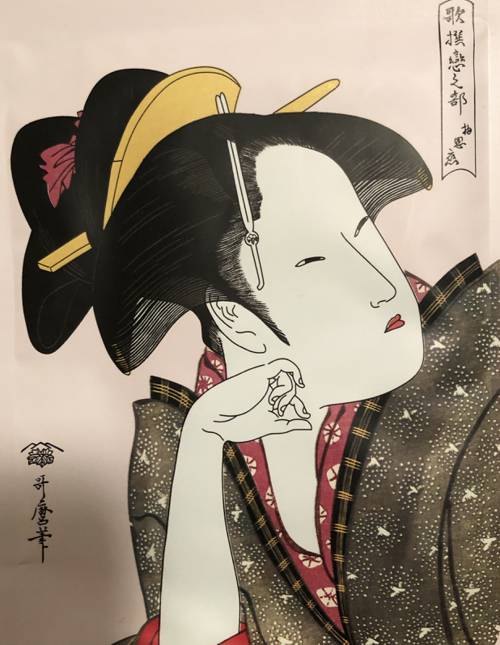
FAQ About The Impact of Japanese Ukiyo-e Art on Western Art Movements

What is Ukiyo-e art?
Ukiyo-e is a genre of Japanese art that flourished from the 17th through 19th centuries. The term ukiyo-e translates to "pictures of the floating world," referring to scenes of urban life, landscapes, and nature. This art form is especially known for its woodblock prints, featuring detailed compositions and vibrant color use.

How did Japanese Ukiyo-e art become known to Western artists?
Ukiyo-e art came to the attention of Western artists primarily in the mid-19th century, following Japan's opening to international trade after the isolationist Edo period. Items such as Ukiyo-e prints traveled to Europe, especially to France, where artists encountered them in shops selling imported Japanese goods.

Which Western art movements were influenced by Ukiyo-e art?
Ukiyo-e art notably influenced several Western art movements, including Impressionism, Post-Impressionism, and Art Nouveau. It inspired artists to explore new techniques in composition, abstraction, and the usage of flat colors and bold lines.

What aspects of Ukiyo-e art influenced Western Impressionists?
Impressionists were drawn to Ukiyo-e art for its innovative use of perspective, distinctive compositional flow, and the emphasis on everyday subjects. The flat areas of color and the lack of shadow in these prints also intrigued artists who were exploring ways to break away from traditional Western art standards.

Can you name some Western artists who were influenced by Ukiyo-e?
Prominent Western artists influenced by Ukiyo-e include Claude Monet, Vincent van Gogh, Edgar Degas, Mary Cassatt, and Henri de Toulouse-Lautrec. These artists incorporated elements of Japanese aesthetics into their own works, such as asymmetrical compositions and the use of bold, flat colors.

How did Vincent van Gogh incorporate Ukiyo-e influences into his work?
Vincent van Gogh admired the bright colors, bold outlines, and dynamic compositions of Ukiyo-e. He incorporated these elements into his paintings, often directly referencing Japanese prints in his own works. For instance, he created his own versions of several Ukiyo-e prints and used Japanese-style woodcuts as inspiration for his art.

What is Japonisme?
Japonisme is the term used to describe the influence of Japanese art and design on Western culture, particularly in the late 19th and early 20th centuries. This phenomenon was part of a fascination with and admiration for Japanese aesthetics and craftsmanship, deeply impacting Western art movements and fashion.

Why was Ukiyo-e appealing to Post-Impressionist artists?
Post-Impressionist artists were drawn to Ukiyo-e because of its use of vivid colors, unusual perspectives, and emotional expressiveness. These elements aligned well with the Post-Impressionist goal of conveying deeper feelings and exploring abstraction beyond the Impressionist movement.

How did Claude Monet's artworks reflect Ukiyo-e influence?
Claude Monet's paintings reflected Ukiyo-e influence in their use of flat color fields, unorthodox viewpoints, and a focus on capturing transient moments in nature, similar to the ephemeral scenes depicted in Ukiyo-e prints. His series of water lilies and Japanese bridge, for instance, echo the motifs and styles found in Japanese woodblock prints.

Did Ukiyo-e art influence the development of Art Nouveau?
Yes, Ukiyo-e art significantly influenced Art Nouveau, especially in its emphasis on stylized forms, flowing lines, and incorporation of natural motifs. Artists involved in Art Nouveau embraced these characteristics to create decorative art that bridged painting with applied arts.

How did Edgar Degas incorporate elements of Ukiyo-e into his paintings?
Edgar Degas, influenced by the unusual perspectives and candid subject matter of Ukiyo-e prints, often depicted scenes with unorthodox angles and cropping. He drew inspiration from Japanese composition techniques to frame intimacies in everyday life, focusing on dancers and theater scenes.

What was Mary Cassatt’s connection to Ukiyo-e art?
Mary Cassatt was deeply inspired by Ukiyo-e, incorporating its principles of composition and design into her work. Her prints often feature the flat planes of color and strong lines characteristic of Ukiyo-e art, demonstrating a blend of Western subjects with Japanese aesthetics.

How did Japanese Ukiyo-e influence Western landscape painting?
Ukiyo-e's approach to landscape, with its flattened perspective and emphasis on natural beauty, influenced Western landscape painting by encouraging artists to adopt similar techniques. This inspiration is evident in the composition choices and palette of artists like Monet and Gauguin, who favored harmonious blends and subtle gradations of color.

What is the significance of Japanese aesthetics in Ukiyo-e?
Japanese aesthetics in Ukiyo-e emphasize simplicity, harmony, and balance, often reflecting the philosophy of 'mono no aware'—an awareness of the impermanence of things. This focus on transient beauty and careful composition resonated with Western artists seeking new ways of seeing and representing their world.

Did Ukiyo-e affect Western perspective and composition techniques?
Yes, Ukiyo-e significantly influenced Western artists' approach to perspective and composition. The prints often use diagonal lines, off-center focal points, and open spaces, challenging Western conventions. These features encouraged artists like the Impressionists and Post-Impressionists to experiment with more dynamic and innovative layouts.

How were color and line used differently in Ukiyo-e compared to Western art at the time?
In Ukiyo-e, color was applied in flat, bold areas without the shading and depth that characterized much of Western art of the period. Lines in Ukiyo-e were used to define shapes and structures clearly and decisively, offering a fresh perspective on form and design that Western artists found exciting and liberating.

What role did Ukiyo-e play in the development of European graphic arts?
Ukiyo-e had a substantial role in shaping European graphic arts by influencing the design of posters, books, and advertisements. The bold approaches to composition and color typical of Ukiyo-e prints inspired graphic designers and artists to create visually captivating works that drew on Japanese methods of simplistic yet powerful visual storytelling.

How did the concept of 'the floating world' relate to Western ideas at the time?
The concept of 'the floating world,' central to Ukiyo-e, symbolized transience and the fleeting nature of pleasure and life. This idea resonated with Western thinkers and artists during a period when notions of impermanence and modernity were becoming more integrated into cultural consciousness.

Did the influence of Ukiyo-e extend beyond visual arts in the West?
Yes, the influence of Ukiyo-e extended beyond visual arts to architecture, fashion, and interior design in the West. The integration of Japanese aesthetics into home decor and fashion became evident during the aesthetic movement, with elements like stylized nature motifs and simple, clean lines reflecting the Ukiyo-e style.

What initiated the massive Western fascination with Japanese culture, including Ukiyo-e?
The Western fascination with Japanese culture, including Ukiyo-e, began in earnest after Japan ended its isolationist policies in the mid-19th century. The Meiji Restoration opened Japan to international trade, allowing the exchange of art and culture. Exhibitions, such as the 1867 Exposition Universelle in Paris, showcased Japanese art, igniting enthusiasm and curiosity among Western artists and collectors.
